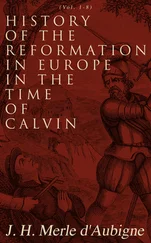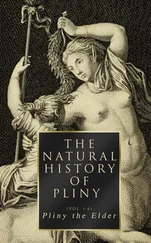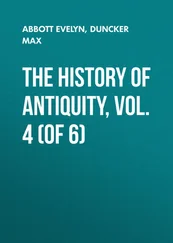Evelyn Abbott - The History of Antiquity, Vol. 3 (of 6)
Здесь есть возможность читать онлайн «Evelyn Abbott - The History of Antiquity, Vol. 3 (of 6)» — ознакомительный отрывок электронной книги совершенно бесплатно, а после прочтения отрывка купить полную версию. В некоторых случаях можно слушать аудио, скачать через торрент в формате fb2 и присутствует краткое содержание. Жанр: foreign_antique, foreign_prose, Историческая проза, на английском языке. Описание произведения, (предисловие) а так же отзывы посетителей доступны на портале библиотеки ЛибКат.
- Название:The History of Antiquity, Vol. 3 (of 6)
- Автор:
- Жанр:
- Год:неизвестен
- ISBN:нет данных
- Рейтинг книги:5 / 5. Голосов: 1
-
Избранное:Добавить в избранное
- Отзывы:
-
Ваша оценка:
- 100
- 1
- 2
- 3
- 4
- 5
The History of Antiquity, Vol. 3 (of 6): краткое содержание, описание и аннотация
Предлагаем к чтению аннотацию, описание, краткое содержание или предисловие (зависит от того, что написал сам автор книги «The History of Antiquity, Vol. 3 (of 6)»). Если вы не нашли необходимую информацию о книге — напишите в комментариях, мы постараемся отыскать её.
The History of Antiquity, Vol. 3 (of 6) — читать онлайн ознакомительный отрывок
Ниже представлен текст книги, разбитый по страницам. Система сохранения места последней прочитанной страницы, позволяет с удобством читать онлайн бесплатно книгу «The History of Antiquity, Vol. 3 (of 6)», без необходимости каждый раз заново искать на чём Вы остановились. Поставьте закладку, и сможете в любой момент перейти на страницу, на которой закончили чтение.
Интервал:
Закладка:
168
Goodwin in Chabas, "Mélanges," 1, 249 ff.
169
Among the Hebrews, the king with whom Hoshea of Israel (734-722 B.C.), negotiates is called Seveh (So). Sargon's inscriptions name the opponent against whom he fought at Raphia in the year 720 B.C. "Sabhi, Sar of the land of Muzur," and also "Sabhi Siltannu of Muzur." The inscription of Karnak gives Sabakon's (Shabaka's) twelfth year; we must, therefore, although Manetho's list allows him only eight years, assume that Sabakon was the opponent of Sargon at Raphia, as stated in a preceding note. If Sabakon died immediately after his twelfth year, he died in 717 B.C. The ruler of Egypt who pays tribute to Sargon in the year 716, is repeatedly called by the Assyrian inscriptions, "Pirhu (Pharaoh), Sar of Muzur." So in the cylinder of G. Smith ("Disc." p. 295), the ruler of Egypt, who unites with Ashdod in the year 711 B.C., is called "Pirhu Sar of Muzur;" finally, the prince who delivers up Yaman, when it has been mentioned that Yaman fled beyond Egypt into the border land of Miluhhi, is called by Sargon "Sar Miluhhi." The Pharaoh, Sar Muzur, whom we find on the throne of Egypt in 716 to 711 B.C., and the Sar Miluhhi, who gives up Yaman, can only be Shabataka-Sebichus, the successor of Sabakon.
170
Mariette, "Monuments," pl. 29 e.
171
Not much weight could be laid on the observation in the Palatine codex of Hieronymus (Jerome); Tarachus (ab Æthiopia duxit exercitum), Sebico interfecto Ægyptiis regnavit annis xx.; but in the inscription of Medinet Habu Tirhaka calls himself conqueror of Kemi, i. e. of Egypt.
172
Lepsius, "Briefe," s. 239, 275.
173
Brugsch, "Geogr." 1, 163.
174
Strabo, p. 61, 686, 687. Büdinger's view ("Ægypt. Forschung. Herodots," 2, 32), that we must recognise Tirhaka in the Etearchus of Herodotus might be adopted if the narrative did not too definitely point out travelling Cyrenæans as the source; and the founding of Cyrene cannot be carried back to the time of Tirhaka.
175
2 Kings xvi. 10-18.
176
No one can seriously maintain that Ahaz imitated the ritual of the chief enemy of Assyria and Judah, the altar and worship of Rezin, who was moreover now overthrown.
177
Isa. i. 3, 5-9; ii. 6.
178
The Books of Kings are only wrong in representing Hoshea as first subject, and paying tribute, to Shalmanesar IV. (xvii. 3).
179
2 Kings xvii. 4.
180
Isa. xiv. 29-31.
181
Isa. xxiii. 1-12.
182
Isa. xxviii. 1-6.
183
So must we read for 800; 60 penteconters required 3000; 60 triremes at least 8000 rowers.
184
"Antiq." 9, 14, 2.
185
As Samaria was besieged 724-722 B.C., we may place the beginning of the Assyrian war in 726.
186
Oppert, "Dour Sarkayan," p. 8, 30; "Records of the Past," 7, 28; E. Schrader, "K. A. T." s. 160; Ménant, "Annal." p. 161.
187
E. Schrader, loc. cit. s. 158; Ménant, "Annal." p. 181.
188
L. 26, in Ménant, loc. cit. p. 192.
189
L. 17, in Ménant, p. 200.
190
2 Kings xvii. 6, 24.
191
"The Annals of Sargon," Oppert, "Records of the Past," 7, 29.
192
Oppert, loc. cit. 7, 30.
193
G. Smith, "Assyr. Canon," p. 125, 126.
194
Isa. xi. 6-8; 2 Chron. xxx. 6, 10; xxxiv. 9.
195
2 Kings xvii. 26 ff.
196
Inscription of Nimrud, in Ménant, loc. cit. p. 205; in E. Schrader, loc. cit. p. 90.
197
"Annals of Sargon," Oppert, "Records of the Past," 7, 29; G. Smith, loc. cit.
198
In the great hall No. 8, in Botta. Ménant, p. 182.
199
Memorial-stone of Larnaka, in Ménant, p. 207; G. Smith, "Assyr. Canon," p. 127.
200
Oppert, "Records of the Past," 7, 29; E. Schrader, "K. A. T." 258; Ménant, loc. cit. p. 161.
201
Ménant, loc. cit. p. 159, 192.
202
E. Schrader, loc. cit. s. 258.
203
Oppert, "Records of the Past," 7, 34.
204
Communication from E. Schrader.
205
E. Schrader, "K. A. T." s. 258; Ménant, loc. cit. p. 181.
206
Isa. xx. 1 ff.
207
Oppert, loc. cit. 7, 40; Ménant, p. 169; cf. l. 12 of the inscription on the bulls in Ménant, p. 162.
208
G. Smith's Cylinder, "Disc." p. 289 ff.
209
Ménant, p. 159.
210
Oppert, "Records of the Past," 7, 26.
211
E. Schrader, "K. A. T." s. 257 ff.; cf. Ménant, loc. cit. p. 186.
212
Ménant, loc. cit. p. 159.
213
Ménant, p. 189, 206-208. That the stone cannot have been set up in Babylon before the payment of tribute in 709B.C., is proved by the mention of the tribute upon it. Cp. G. Smith, "Z. Ægypt. Sprache," 1869, s. 109; 1870, s. 70, 71.
214
Flandin gives the long and short sides of the rectangle doubled at 6784 metres; the inscription which reckons in the whole circuit the building of the palace which juts out from the rest, at 16,280 cubits ( ammat ). The Babylonian and Assyrian cubits are both = 525 millimetres; Lepsius, "Abh. Berl. Akad." 1853; "Monats-Berichte Ders." 1877. Vol. I. p. 305.
215
Rawlinson, "Monarch," 12, 324 ff.
216
Oppert, "Dour Sarkayan," p. 23, 24.
217
Oppert, "Records of the Past," 7, 55, 56.
218
Oppert, "Dour Sarkayan," p. 8.
219
In Ménant, loc. cit. p. 181.
220
Oppert, "Dour Sarkayan," p. 27, 28; Oppert et Ménant, "Doc. juridiques," p. 168.
221
Ménant, "Annal." 162. In Oppert, "Records of the Past," 7, 30, the fourth canton is called Pappa. Above, p. 86.
222
Inscription of Nimrud in Ménant, loc. cit. p. 206. He reads two talents 30 minæ of gold; G. Smith reads 11 talents of gold.
223
Oppert, "Records of the Past," 7, 32.
224
Oppert, "Records of the Past," 7, 35, 36, 37. Vol I., p. 520.
225
Annals in Ménant, loc. cit. p. 164.
226
Annals in Ménant, p. 164; Oppert, loc. cit. 7, 33.
227
Ménant p. 183.
228
Oppert, loc cit. 7, 34.
229
Ménant, p. 184.
230
Ménant p. 167; Oppert, loc. cit. 7, 37.
Читать дальшеИнтервал:
Закладка:
Похожие книги на «The History of Antiquity, Vol. 3 (of 6)»
Представляем Вашему вниманию похожие книги на «The History of Antiquity, Vol. 3 (of 6)» списком для выбора. Мы отобрали схожую по названию и смыслу литературу в надежде предоставить читателям больше вариантов отыскать новые, интересные, ещё непрочитанные произведения.
Обсуждение, отзывы о книге «The History of Antiquity, Vol. 3 (of 6)» и просто собственные мнения читателей. Оставьте ваши комментарии, напишите, что Вы думаете о произведении, его смысле или главных героях. Укажите что конкретно понравилось, а что нет, и почему Вы так считаете.












